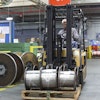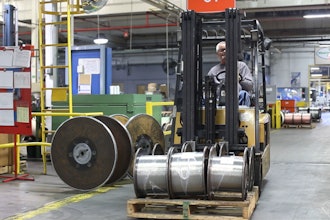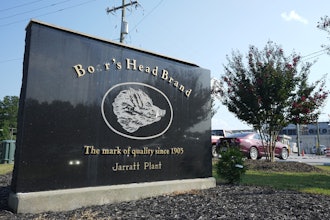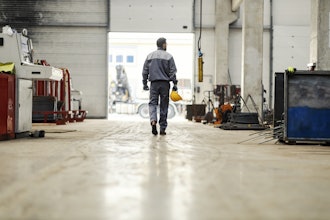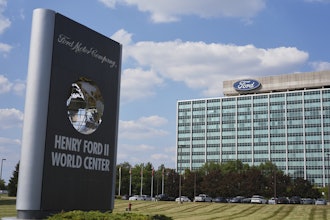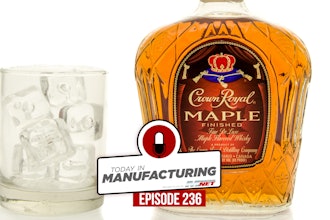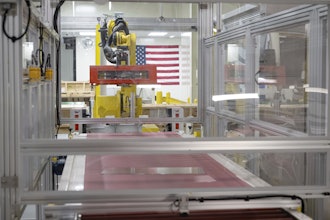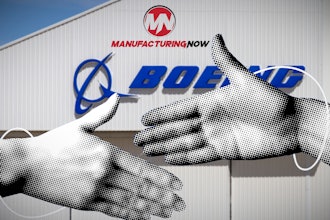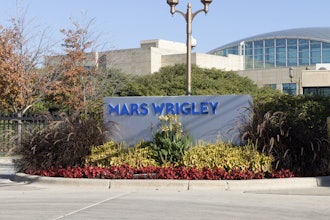The fog was so thick at times, maintenance mechanic Nathanial Koniecko wasn’t sure if he was walking through the cold storage freezer at the Norwich, Conn. branch of U.S. Foodservice, or trekking through the eerie Sherlock Holmes novel, “The Hound Of The Baskervilles.”
Besides fog, insufficient seals on the 11-year-old, 100,000-square-foot food distribution warehouse’s original 9 x 14-foot cold storage door were also creating maintenance intensive and potentially dangerous ice build-ups in the freezer entranceway.
Energy Audit Calculates Losses
Koniecko knew the facility needed this and other equipment updates to curb growing energy losses, but didn’t know the extent of the situation until he invited Arbon Equipment Corp., a Windsor, Conn-based industrial equipment distributor, to perform a free energy audit.
The audit analyzed infiltration load, which is the amount of heat the cold storage door allows into the 750-cubic-foot cold storage area, and analyzed the following existing freezer door’s parameters: • Type of door
• Size of door opening
• Length of time it stays open per cycle
• Temperature difference between the areas on each side of the door
• Number of days the facility is operating
• Number of cycles per day
• Cost of electricity for the New England area
• Defrost rating for each door.
The energy audit revealed significant losses from the freezer door, plus additional losses were generated from hinge gaps in the 11 truck slips that averaged three to four-inch voids in the 38ºF refrigerated dock area. “When we added up all those hinge gaps, it was equal to having a 2-foot x 3-foot hole in the wall of the building where energy could escape,” said Koniecko.
All totaled, the retrofit project, which amounted to over $100,000 in equipment and installation labor from Arbon, a subsidiary of Rite-Hite Corp., Milwaukee, Wis., resulted in an impressive sixteen-month payback, according to Davis.
One New Door
The most significant energy saving difference was in the lone freezer door replacement with a Barrier-Fold Door, a thermal air sealing, impactable door that combines the high speed operation of 84 inches/second with the insulating characteristics of R-2.5 – a considerable difference over the previous 10mm PVC door panels’ R-0.4. Annual energy savings between the two doors (while closed) for to infiltration and conduction amounted to $2,272 and $435, respectively.
The energy saving difference between the previous door’s 6.72 kW defrost heaters versus the 4.4 kW of the Rite-Hite Barrier-Fold’s thermal air defrost resulted in an additional $1,625 annual savings, according to Koniecko. Besides the obvious energy losses from slow cycling, the existing door’s poor seal also led to ice accumulations that required removal at an estimated maintenance cost of $6,000 annually. “At least once a month two maintenance employees would spend a half-day removing ice accumulations at the entrance,” Koniecko said.
The door's opening/closing safety features also added to the benefits of having a drier, safer entrance. The door is activated by a motion sensor system that can be programmed to sense size and direction of moving objects. The Barrier-Fold’s soft panels and leading edge acts as a second line of defense against product damage or injury in the event of accidental contact with the door.
Although a formal audit was not performed after the retrofit, Koniecko estimates the new door will continually amount to significant energy savings per year when considering the previous door’s convection losses, the reduced freezer system defrost cycles, and door defrosting method.
“Before the retrofit, the freezer system’s three 125-hp Frick compressors ran almost continuously. The door, plus a retrofit of the freezer system’s computer controller, has reduced the compressor run times by nearly 30 percent.
Visibility in the freezer has improved significantly after the fog lifted and humidity infiltration was nearly eliminated by the new door’s seals.
